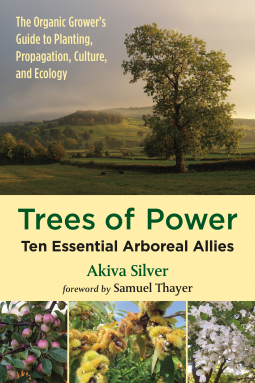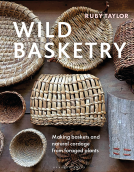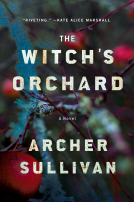
Trees of Power
Ten Essential Arboreal Allies
by Akiva Silver
This title was previously available on NetGalley and is now archived.
Send NetGalley books directly to your Kindle or Kindle app
1
To read on a Kindle or Kindle app, please add kindle@netgalley.com as an approved email address to receive files in your Amazon account. Click here for step-by-step instructions.
2
Also find your Kindle email address within your Amazon account, and enter it here.
Pub Date Mar 06 2019 | Archive Date Mar 01 2019
Chelsea Green Publishing | Chelsea Green
Talking about this book? Use #TreesOfPower #NetGalley. More hashtag tips!
Description
Trees are not only a magisterial part of the natural landscape, they are our allies in maintaining a healthy planet. Partnering with trees allows us to build soil, enhance biodiversity, increase wildlife populations, grow food and medicine, and pull carbon out of the atmosphere. In his new book, Trees of Power, Akiva Silver shares a step-by-step path toward working with these arboreal allies, from propagation and planting, to understanding the specific traits of ten of our most important tree species that have multiple benefits for humans, animals, and nature alike.
In Trees of Power you'll learn the most important concepts necessary for success with perennial woody plants, and the time-honored techniques to propagate trees--whether by seed, grafting, layering, or with cuttings--that make it easy for anyone to increase their stock of trees, simply and inexpensively. Ten chapters focus on the specific ecology, culture, and uses of these "power trees," including the chestnut, apple, ash, hickory, beech, black locust, and more.
Silver's combination of hands-on experience and sincere exuberance for the natural word will inspire a new generation of tree stewards wishing to create a lasting legacy for future generations, while appealing to gardeners, homesteaders, environmentalists, educators, and farmers, or anyone who feels a deep appreciation for these magnificent plants.
Akiva Silver owns and operates Twisted Tree Farm, a homestead, nut orchard, and nursery near the Finger Lakes Region of New York. There he grows around 20,000 trees per year that are raised naturally without synthetic fertilizers, pesticides, or herbicides. Trees of Power is his first book.
Available Editions
| EDITION | Other Format |
| ISBN | 9781603588416 |
| PRICE | $29.95 (USD) |
Featured Reviews
 David W, Media/Journalist
David W, Media/Journalist
Akiva Silver is a tree crops evangelist. I don’t think there is a tree he hasn’t thought about to make meals, and money out of. That’s the main difference between Trees of Power and other nature, gardening or farming books. Everywhere he looks, Silver sees the potential for new markets. Throughout, he looks at everything as a cash crop. From perennial spring medicinal flowers to fall chestnuts, the forests provide sellable crops, often in ways we have yet to master.
The book is a brain dump from someone who lives for his trees. Silver moves 20,000 bareroot cuttings and seedlings every year. He knows how much and what kind of mulch is best, how to apply nitrogen fertilizers, and when to water. He knows where threes prefer to be, and depending on where they are, how much they grow in a year. Mostly, he knows what he can make of them in terms of food, shelter, income, and also peace of mind.
There are two sections. The first deals with propagating trees by seed, grafting, layering and cuttings. These apply to different degrees with different trees. Silver prefers selling bareroot trees that he grows, storing them in and on the ground and in his unheated basement. He dislikes selling potted trees because they are unnaturally rootbound, which can girdle and kill the tree, and because he is basically exporting the rich soil he needs to grow the trees with every pot that leaves the farm. They also take up too much floor space, compared to the piles of bareroot specimens he accumulates. He can produce those 20,000 trees a year in less than one of his 20 acres.
The second section is profiles of his top ten trees. Unlike most such books, there are no portraits of mature trees or detailed paintings of leaves, seeds and flowers. There are plenty of totally nonprofessional color photos, mostly of clumps of plants he identifies, but are hard to appreciate on the page. Lots of shots of his three kids too. The trees are appreciated for their fruit, their lumber, their unique approach to survival, their contribution to the ecosystem, and their ease of propagation.
The ten trees are chestnut, apples, poplar, ash, mulberry, elderberry, hickory, hazelnut, black locust and beech. All are native to his upstate New York farm.
Along the way, there are some interesting insights:
-In his forest walks, Silver noticed it was never flat. There were pits and mounds everywhere. Step in a pit, and it was wet and squishy. And there were always trees growing on the mounds. The mounds were the stumps of dead trees, and the pits were the holes left by older trees falling over. Trees thrive on the high ground of the mound, with the ability to tap the moisture of the pits as needed.
-When Europeans came to farm, the first thing they did was flatten the land, filling in the pits and clearing the mounds. Nature required the variety, while farmers needed the convenience and symmetry of flatlands. Convenience won.
-Glyphosate is not simply a herbicide, but actually registered antibiotic. This means it kills the naturally needed bacteria in the soil, not just the weeds. It can leave fields totally sterile. And help create new antibiotic resistance.
-Today it is common for agricultural fields to contain around one percent organic matter.
David Wineberg
Readers who liked this book also liked:
Megan Ashley Smith, LCMHC, NCC
Health, Mind & Body, Nonfiction (Adult), Self-Help



















